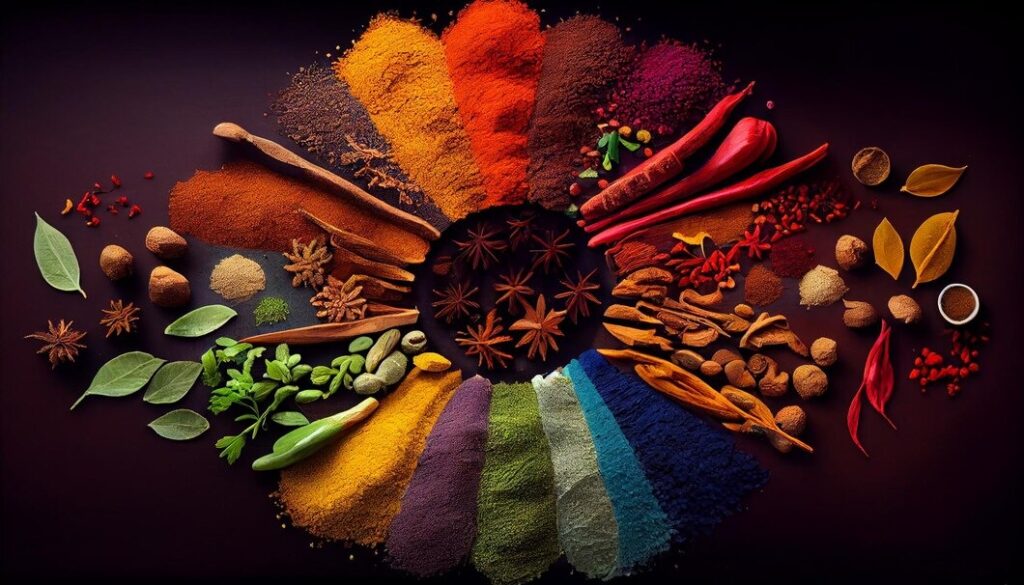An Aromatic Expedition – Part #1, The Spice Bazaar

Through the world of colourful, aromatic spices, we can experience one-of-a-kind culinary experiences. From the fiery depths of Sichuan peppercorns to the gentle floral notes of saffron, they transport us to a state of bliss and ecstasy. Delving into the vibrant, weaving tales of tastes spanning continents is fascinating. We welcome you to the world of salt, pepper, sweets, and sourness, where they join together to ignite and excite your passion and palette. Let us unlock the secrets of ancient traditions and tantalise the senses with the prospect of new culinary discoveries.
New culinary traditions and cultural exchange flourished and spread throughout many different civilisations through the trade of spices. As we explore the route map of our familiar spices, we see secret but fascinating tales of expeditions and adventures. Some age-old, unique spices around the world have a rich and colourful past, dating back more than four thousand years!
Sumac
Sumac, a deep red Middle Eastern spice, is a common flavouring agent in many traditional Middle Eastern dishes. This tangy, smokey citrus-flavoured spice is perfect for adding a subtle acidic flavour to dishes. Dried red sumac berries are used to make the spice. It is commonly added to salads, meats like chicken and fish, and rice dishes.
Sichuan Peppercorn
Sichuan peppercorn is not actually a pepper variety. They are the berries obtained from the prickly citrus ash tree. Carefully plucked from thorny citrus trees, the berries are dried under the sun. Citrus-flavoured, mouth-numbing Sichuan peppercorn is the main ingredient used in the complex Sichuan cuisine, adding heat and aroma. This is one of the five Chinese spices ( Cassia, Fennel, cloves, Star anise, and Szechuan pepper).
Shichimi Togarashi
A popular Japanese seven-spice blend, which is also known as
Shichimi Togarashi contains red chilli pepper, Japanese pepper, roasted orange peel, black and white sesame seeds, hemp seeds, yuzu peel, nori, poppy seeds, and ground ginger. This finishing ingredient can be added to various dishes, such as soups and salads. Shichimi Togarashi has a unique blend of fruity, nutty, and umami flavours with the fragrance of dried ginger.
Berbere
Ethiopian spice Berbere is a blend of fiery-natured spices, including coriander, garlic, ginger, chilli pepper, Ethiopian holy basil, rue, korarima, ajwain, fenugreek, and nigella. Cooking with Berbere imparts complex flavours and heat to stews, lentil dishes, and grilled meats.
Ras el Hanout
This spice blend is popular in Tunisian, Moroccan, and Algerian cuisines. It typically contains aromatic spices such as cumin, coriander, cinnamon, cloves, nutmeg, and cardamom. When used in tagines, couscous, and grilled meats, Ras el Hanout adds an extra depth of flavour.
Annato
Annatto, a spice made from the seeds of the achiote tree, is a natural colouring agent in Latin American cuisines. Particularly in Mexican and Caribbean cooking, it elevates the appearance of dishes like stew and rice by giving them a golden hue.
Asafoetida
Popularly known as ‘hing,’ asafoetida is an aromatic spice of Iranian origin. It is also known as ‘devil’s dunk’. It is mainly used to enhance the flavour of dishes and gravies.